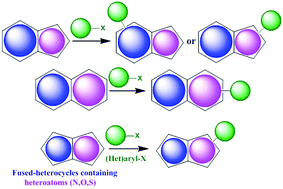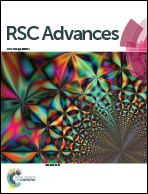Advances in direct C–H arylation of 5,5- 6,5- and 6,6-fused-heterocycles containing heteroatoms (N, O, S)
Abstract
Direct arylation is a useful method for the preparation of (hetero)aryl–aryl systems by C–H bond cleavage. This procedure has several advantages such as the reduction of cost, time and waste. This report aims at reviewing the advances made in C–H arylation of 5,6, 6,6 and 5,5 fused-heterocyclic systems including: indole, azaindole, imidazo[1,2-a]pyridine, imidazo[1,2-a]pyrimidine, imidazo[1,2-a]pyrazine, imidazo[1,2-b]pyridazine, pyrazolo[1,5-a]pyrimidine, imidazo[1,2-b][1,2,4,5]tetrazine, indolizine, pyrrolo[1,2-a]pyrazine, indazole, benzothiadiazole, benzotriazole, benzoxazole, benzofuran, benzothiophene, benzimidazole, benzothiazole, thieno[3,4-b]pyrazine, indolizine-2-carboxylate, thieno[3,4-b]pyrazine, quinoline and derivatives, chromanone, coumarin, quinoxaline, thieno[2,3-b]thiophene, thieno[3,4-b]thiophene, imidazo[2,1-b]thiazole, imidazo[1,2-b]pyrazole, thiazolo[3,2-b][1,2,4]triazoles and pyrrolo[3,2-b]pyrrole.


 Please wait while we load your content...
Please wait while we load your content...